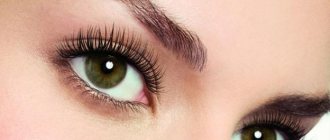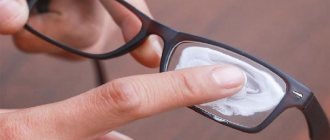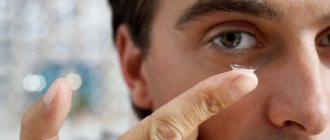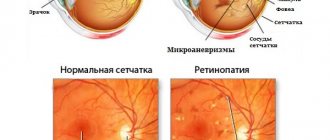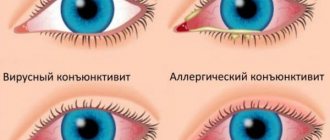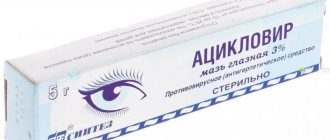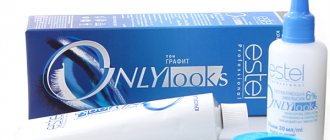The eye is a delicate and unprotected organ that can be subject to various injuries. It is important to know how to eliminate puffiness under the eyes after an impact. The damaged eye area begins to become very painful, red, and swollen. However, external aesthetic unattractiveness may not be the worst consequence. There are situations when the entire visual system is severely damaged, and the complications are very serious.
The mechanism of swelling due to bruise
A bruise on the surface of the face can appear for various reasons, it could be a blow, a careless movement. Moreover, in women, hematomas on the eyebrows occur no less often than in men.
There may be different reasons for this phenomenon:
- cleaning at height or near shelves located at head level;
- accidentally hitting a tree branch;
- exercises in the gym;
- excessively active recreation in nature;
- a toy left on the floor that can be accidentally stepped on;
- other ordinary cases when a hard object comes into contact with the surface of the brow ridge.
Each specific case has its own reason for the occurrence of such trouble, however, the result remains unchanged - the face is adorned with an unattractive bruise, so inappropriate for female features.
To effectively combat impact marks, you need to understand, first of all, how bruising occurs:
- first, there is a sharp combination of the soft tissues of the face (or body) with a hard object;
- sharp pressure leads to disruption of tissue integrity, rupture of a small network of blood vessels;
- due to the fact that the skin is stronger than the vessels underneath it, it does not always lose its integrity, but the vessels burst, releasing fluid;
- first a swelling forms, which increases in size;
- approximately 10 hours after the blow, a bruise appears;
- the blood that has been released from the vessels under the epidermis layer hardens, which gives the skin a dark red tint, which can turn into deep purple, blue;
- after a strong blow, swelling can persist for up to several days, and for the first 3 days it can increase, only then it begins to slowly lose its volume and richness of color, slowly turning yellow.
Traumatologists have developed a special classification of bruises according to their severity. This is necessary for correct diagnosis and selection of an appropriate method of therapy, assessment of the risks of complications and their prompt prevention.
1st degree : there are only minor damage to the fiber that is located under the skin. Such strokes should not cause concern; they go away on their own in about 5 days, without the need to contact a specialist. There may be pain at the site of the impact, as well as some blue discoloration.
2nd degree : here there is severe damage to the fiber under the skin. Swelling, acute pain, and hematoma are sure to appear. This cannot be done without treatment with special drugs.
3rd degree : the bruise affects muscle fibers, periosteum, and there is often a violation of the integrity of the skin. Due to the high risk of developing a bacterial infection, mandatory consultation with a traumatologist and strict adherence to his instructions are required.
4th degree : this is a very severe degree, in which there is a violation of the functionality of bone tissue, and the risks of complications affecting the functioning of the brain increase. In this case, you cannot do without emergency medical care.
We recommend reading: Shape eyebrows according to face type, how to do it?
What to do if swelling appears?
If swelling occurs in the area of the brow ridge, this is an alarming signal. It is impossible to do without assistance here. This is the only way to reduce the risk of developing even greater swelling and bruising.
Actions to be taken:
- Perform a first aid.
- Contact your doctor without delay if you experience severe headaches or dizziness.
- Start treatment of swelling, hematoma.
Urgent care for swelling from a bruise
The optimal first aid after a blow is to apply cold to the affected area. Moreover, it does not have to be ice; a frozen piece of meat from the freezer or a regular tablespoon will do. Once any type of cold has been applied, ice can be found, wrapped in a cloth, and used to further cool the damaged surface.
Cold is required to stimulate the reduction of blood vessels, which will stop internal bleeding, which can aggravate the situation and cause an even more extensive hematoma.
The cold needs to be kept for about an hour; if this condition is met, the swelling will subside, and the bruise itself will go away much faster. If you keep the cold for less than this time, the burst vessels will close with blood clots, but the blood will flow further, which will lead to an increase in the area of the bruise and the degree of swelling.
Causes of swelling
Trauma and swelling under the eye after an impact can occur due to various reasons. But the main one is the mechanical effect on the organ of vision of a foreign object.
This could be an accidental blow to a cabinet or corner of a wall, as well as a deliberate blow - with a fist, a bruise when falling on protruding objects. The degree of injury depends on the force of the impact. If a bruise occurs, the structures of the cornea, sclera, lens, optic nerve, blood vessels, retina and lacrimal drainage system may be damaged. The eye area is surrounded by tissue with a small layer of subcutaneous fat and a large number of blood vessels. As a result, injury after a bruise is accompanied by swelling, hemorrhage and rupture of dense tissue.
Possible consequences of a bruise
The occurrence of unpleasant consequences from bruises is influenced by immunity and metabolism, its speed, in the body of each individual person. In addition, the impact force has its effect.
The presence of a hematoma, headache, swelling - all these can be signs of trauma to the facial skeleton, disorders and damage to the brain.
A serious injury does not tolerate careless treatment: you need to promptly, without delay, contact a traumatologist who will prescribe an examination and therapy that will help avoid the development of serious complications.
A hematoma can have the following consequences:
- deformation of bone and other tissues of the nose;
- traumatic brain injury;
- disturbances in normal breathing;
- development of rhinitis, sinusitis, sinusitis in chronic form;
- concussion;
- infectious lesion;
- perforation of the eardrum;
- fractures of facial bones.
If the blow that caused the bruise went obliquely, detachment of the subcutaneous tissue is likely, which will cause the formation of a deep and very large hematoma. After compaction, cysts of a traumatic nature may form there. The only way to get rid of them is through surgery.
What is edema and why does it appear?
Edema refers to excessive accumulation of fluid in the tissues of the human body. Edema, which is characterized as swelling, appears when there is a surgical increase in the amount of fluid in the intercellular space.
Traumatic swelling of the upper or lower eyelid is most often unilateral, that is, it appears only in one eye - the one that received the blow. But more serious damage can occur when both eyes are affected.
How to remove a hematoma from the face?
To remove a hematoma from the face, as noted above, it is necessary to apply cold to it. Due to this effect, the blood vessels narrow, which reduces the amount of blood flowing into the space between the tissues and reduces the severity of bruising.
Cold exposure suppresses the work of inflammatory mediators, for this reason the sensitivity of the bruise site decreases and severe pain disappears.
Cold exposure can be done using:
- directly ice, snow;
- special cryopackages (can be purchased at a pharmacy);
- ice cubes;
- towels soaked in ice water;
- any cold product removed from the refrigerator or freezer.
Experts recommend keeping the cold on the bruise for a minimum of 20, maximum 60 minutes. This is the only way to obtain a pronounced therapeutic effect. You cannot keep it cold for more than two hours.
During the entire period of exposure to cold on the facial tissues, it is necessary to:
- monitor your own feelings;
- monitor changes in the condition of the skin;
- the area of the bruise should be slightly numb and red;
- if an area of the skin turns white, it means that there is a circulatory disorder at the local level due to prolonged narrowing of blood vessels.
We recommend reading: How quickly eyebrow microblading heals
Cold therapy should not be used if:
- pathological problems with blood circulation;
- diabetes mellitus
Cold must be applied strictly through the fabric; with direct contact, there is a high probability of frostbite of the skin and the appearance of pigmentation after tissue necrosis.
When there are open skin lesions at the site of the injury, they need to be treated with an antiseptic. The following tools are suitable:
- brilliant green;
- hydrogen peroxide;
- furacillin;
- potassium permanganate solution (concentration 0.01%).
For the first 2 days, you should not massage bruised tissues or apply heat to them. To reduce pain, you can take analgesic drugs (Ibuprofen, Ketanov).
Medications
A bruise should be treated using drugs with different functions:
- cooling;
- resorption;
- regeneration;
- anesthesia.
Let's take a closer look at the most effective means.
Coolants
Cooling preparations include those containing menthol, analgesic substances, and various essential oils.
These tools help:
- eliminate pain;
- reduce blood flow to the site of hematoma formation;
- prevent bruising.
Effective drugs:
- Sanitas;
- Menovazin;
- Venoruton.
The use of cooling agents is possible and effective only during the first two days.
Absorbable and painkillers
Troxevasin, Febaton, Indovazin, Sinyako, Rescuer are common drugs that not only relieve pain, but also promote intensive resorption of hematomas.
In addition, similar drugs:
- prevent the formation of blood clots;
- eliminate itching;
- disinfect the surface of the skin;
- improve trophism inside tissues;
- eliminate swelling;
- relieve inflammation.
Some of the drugs have a number of contraindications, therefore, before using them, you must carefully study the instructions.
Such products should be applied in a thin layer, the skin should be pre-cleaned. The ointments are rubbed in with light massaging movements. Application must be repeated strictly in accordance with the instructions.
Features of different forms of drugs:
- The gel does not give a greasy shine, which inevitably occurs after the ointment. The aqueous base of such drugs easily penetrates the skin.
- The ointment is ideal for use on skin prone to dryness and crusting. It will soften the skin and help the active components penetrate to the site of action.
Symptoms that require immediate medical attention
For any injury to the eye or periocular area, you should consult a doctor. After examination by a traumatologist, a consultation with an ophthalmologist will not hurt.
IMPORTANT! Even a minor blow can result in serious consequences, which do not always manifest themselves immediately.
Symptoms that indicate the need for an urgent visit to a doctor are:
- deterioration in clarity and clarity of vision, blurring of the picture;
- hemorrhage in the eyeball;
- burning sensation accompanied by profuse lacrimation;
- difficulty and sharp pain when trying to move the eyeball;
- eye deformation;
- pain in the eyes as a reaction to light;
- a feeling of discomfort in the eye similar to that of sand.
Associated symptoms that often occur with serious bruises are dizziness, nausea, weakness, hemorrhages and bleeding, unbearable pain in the bone area. If the victim has any of the problems mentioned, do not neglect visiting the emergency room.
Folk remedies used at home
To treat bruises in the area of the brow ridges, you can use not only pharmaceuticals, but also folk recipes. They include food and medicinal plants.
Traditional medicine recipes can be used only for the treatment of bruises belonging to stage 1 or 2.
Folk remedies help:
- relieve swelling;
- remove inflammation;
- avoid the formation of blood clots or speed up the process of their resorption;
- stimulate local immunity;
- improve tissue trophism;
- relieve pain to a small extent;
- speed up metabolism.
Cabbage, potatoes and burdock
This recipe is not difficult:
- rinse green cabbage leaves under cool running water;
- make small cuts on the surface of the sheet;
- apply to the bruised area;
- secure with adhesive tape;
- keep until the sheet dries;
- repeat 6 times.
The combination of cabbage and raw potatoes will help to obtain a pronounced decongestant effect. Keep the grated potato pulp for half an hour. Burdock is suitable for use when it is at hand; it is thoroughly washed, cut and applied to the bruised area.
Aloe and honey
This recipe will help cure a bruise:
- take a large, at least two-year-old aloe leaf;
- chop aloe;
- mix it with honey in equal parts;
- put into a glass bottle;
- Keep refrigerated;
- apply to the bruise, cover with gauze;
- hold for 20 minutes;
- repeat up to 3 times a day.
We recommend reading: Why do eyebrows hurt?
Banana and pineapple
If you apply a banana peel or a piece of pineapple to the bruised surface, you can significantly reduce the swelling and remove the bruise. This compress is kept for half an hour, repeated 4 times a day.
Apple vinegar
To prepare the medicinal composition, you need:
- dilute 2 tsp. vinegar in 1 liter of cold water;
- moisten a piece of gauze in the resulting liquid;
- apply to the damaged area;
- keep for half an hour;
- repeat 3 times a day.
Heat therapy
Exposure to heat, at a certain stage, helps in stimulating the processes of lymph and blood circulation. The main thing is that such manipulations are carried out no earlier than 2 days have passed since the injury.
How to carry out the procedure?
- Roll up a piece of gauze into 5 layers.
- Soak the cloth in hot water.
- Apply to the bruise.
- Insulate with polyethylene and thick fabric.
- Keep for 20 minutes.
- Repeat twice a day.
To enhance the warming effect, you can dilute camphor or regular ethyl alcohol (40%) and vodka with hot water.
Massage
Massage helps achieve the following goals:
- stimulation of muscle contractility;
- work with subcutaneous tissues;
- improved blood circulation;
- stimulation of metabolism;
- acceleration of infiltrate resorption processes;
- reduction of swelling;
- resorption of hematomas;
- reducing the risk of muscle atrophy.
You can massage the injured area 48 hours after receiving a bruise. The main thing is that the surface of the skin does not have open damage, abrasions, or wounds.
Therapeutic massage includes the following actions:
- deep strokes;
- kneading;
- vibration;
- superficial stroking.
The massage procedure should last about 10 minutes and can be repeated up to two times a day. Gradually, the duration of the procedure can be increased to 15 minutes.
Possible complications
The eye area requires close attention and monitoring of the victim’s well-being when receiving injuries or bruises. Any deterioration of the general or local condition is an undeniable reason for an immediate visit to the doctors. To avoid complications, a trip to the hospital or emergency room is necessary in any case immediately after injury.
Complications include:
- concussions of varying severity;
- corneal damage;
- violation of the integrity of the eye lens;
- retinal detachment;
- partial or complete blindness;
- leakage of intraocular fluid.
A banal household injury may well turn into a serious complication and cause vision loss. Therefore, you should not be careless about bruises and hematomas.
How to disguise a hematoma?
A hematoma can seriously ruin a woman’s mood, especially when, after an injury, she has to go out in public and go to work. In order not to worry about the bruise becoming visible to others, you can try different ways to disguise it.
Salt compress
A salt compress is an excellent way to eliminate swelling after an injury, but it should be used in extreme cases, because it seriously harms the skin.
Recipe:
- dissolve 3 tbsp. salts in warm, pre-boiled water;
- moisten a gauze cloth in this liquid, holding it in a container with the solution for at least 5 minutes;
- apply to the bruise;
- hold for 20 minutes;
- rinse skin with warm water.
Concealers
Modern cosmetics - concealers - are specially created to disguise skin defects. Before using them, it is important to choose the right shade of such a product.
Rules for choosing a concealer shade:
- blue-purple bruise - orange;
- green yellow;
- yellow – lilac, pale purple.
If the hematoma covers a large area of the eyebrow, you should use a coverstick, but the use of a cream or pencil is justified to mask small bruises.
An injury to the brow ridge is no less dangerous than bruises to other surfaces of the face and head. Therefore, you should take it seriously and not let things take their course. If there is serious damage to the skin, you should immediately seek help from a specialist. If the hematoma is minor, you can try to cope with it on your own.
First aid for swelling
Swelling inevitably appears on the upper or lower eyelid after an impact. But with timely assistance, its severity can be significantly reduced. There are a number of measures to relieve swelling in case of an eye injury.
The first rule for an injury is to apply a cold compress to the injured area within the first 20 minutes after the injury. The essence of this measure is that cold helps to constrict blood vessels and accelerate blood clotting. As a result of this procedure, a large amount of fluid does not have time to accumulate in the tissues. But it is important to know that you can only apply cold to the injured area if the tissue is not affected.
Pharmacies sell special hypothermic containers that contain cold elements. If you don’t have such a package at home, then you can use any cold means. For cooling, you can use any cold product from the refrigerator. Or use any frozen product, but first wrap it in cloth. This will help avoid tissue frostbite. A regular bottle of water can provide the desired effect.
To relieve swelling from the eyes when bruised, apply the compress for about 15 minutes. After providing first aid, be sure to contact a specialist. Even if there is no pronounced swelling, the help of a doctor is required. Any blow is a possibility of damage to the eyeball and its inner membranes.
